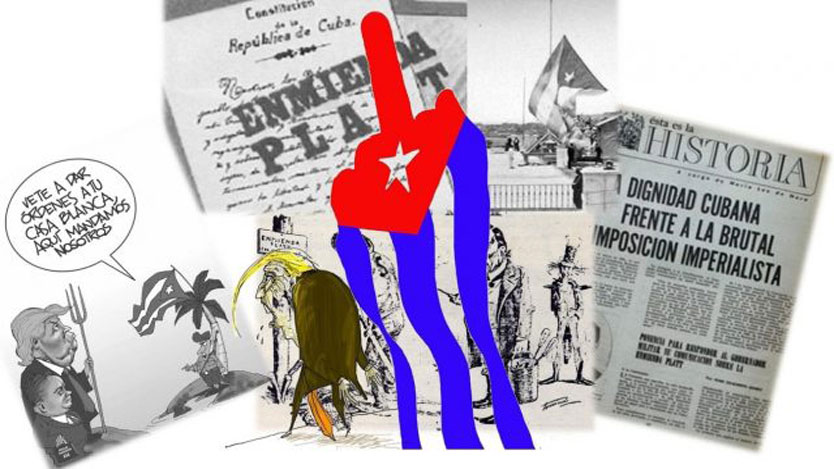The Platt Amendment, an invention forced into the first Cuban Republican Constitution, was approved on June 12, 1901 after a U.S. military intervention thwarted the dreams of independence of the patriotic islanders and went down in history as revealing of the true intentions of the northern power that waited with some patience and many tricks for the “ripe fruit” to fall into their hands.
The use of force became manifest in the February 1898 blowing up of the battleship Maine in the harbor of Havana and the deployment of the so-called Spanish-Cuban-American War, two timely and precise surgical operations designed to achieve one of the U.S. plans for the continent. Suffice it to remember the messianic thought of “America for the Americans” cherished by the heroes of the Union.
Spain was crushed in Cuba after a U.S. naval siege imposed as the mambi fighters painfully saw their impeding victory snatched out of their hands and their soil trampled by foreign troops who denied them rights and decision-making power in everything they had earned with honor and courage after fighting for 30 years.
However, the end of Spanish rule, officially derived from the infamous Treaty of Paris—which was oblivious to the Cuban patriotic belligerence—did not mark the end of the U.S. intervention: interference and force were used, in spite of the fact that President William McKinley had signed a Joint Resolution on April 20, 1898, in which he declared: “…that the people of the island of Cuba are and of right ought to be free and independent”. It was by



